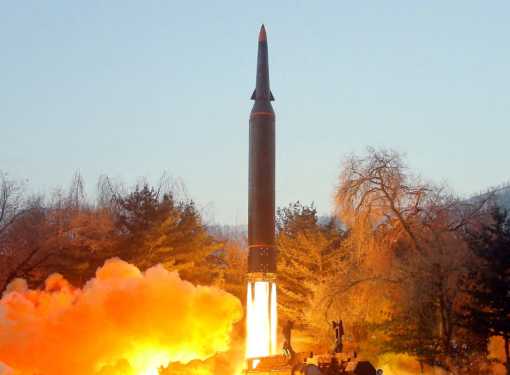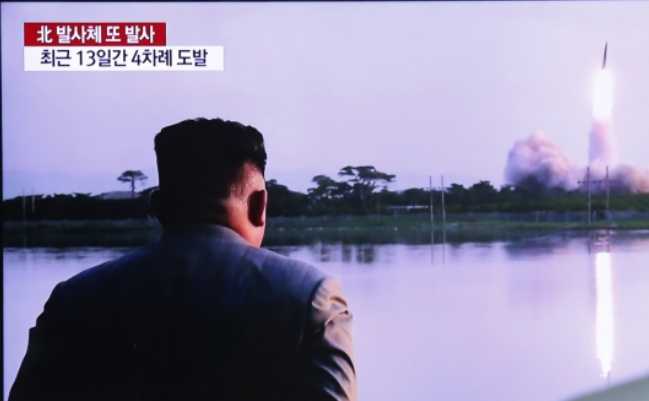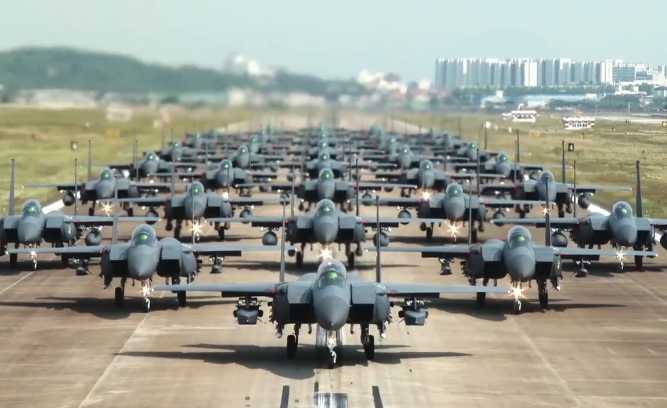
SEOUL, SOUTH KOREA — North Korea declared Wednesday that its latest launch involved another “hypersonic missile,” saying leader Kim Jong Un attended what it described as a successful test.
State media pictures show Kim wearing a leather jacket and peering with binoculars inside what appears to be an observation stand meant for him to observe the Tuesday launch.
The missile demonstrated “excellent maneuverability” and accurately hit a target about 1,000 kilometers away, according to the report in the Korean Central News Agency.
That is longer than the range estimated Tuesday by South Korea’s military, which closely tracks such launches. Seoul’s Defense Ministry said the missile traveled only about 700 kilometers but demonstrated improved capabilities.
The latest North Korean missile flew at a maximum speed of Mach 10, or 10 times the speed of sound, compared with Mach 6 for the missile launched last week, South Korea’s Yonhap news agency quoted Seoul officials as saying.
This is North Korea’s second test this year of what it referred to as a hypersonic missile. Following its launch last week, South Korea claimed North Korea was exaggerating its capabilities.
Judging from North Korean state media photos, the missile launched Tuesday appeared to feature the same conical shape as the weapon tested last week.
Following last week’s launch, many defense experts noted that North Korea had not tested a hypersonic glide vehicle (HGV) as it claimed, but instead had utilized a similar but less advanced technology known as a maneuverable reentry vehicle (MaRV).
“It could be considered a type of HGV — it’s hypersonic, it can glide, and it’s a vehicle — but it does not represent quite the same category of technology that we normally associate with that label,” said Joshua Pollack, a researcher at the James Martin Center for Nonproliferation Studies.
In a September launch, North Korea appeared to use technology more closely resembling an HGV. Pictures in state media showed a vehicle with a flattened, winglike shape that was attached to a larger rocket. Analysts say that shape helps it glide longer distances.
HGVs sit atop a booster rocket and detach from it before gliding to their target. Since HGVs fly at relatively low altitudes and can be maneuvered in flight, they are, in theory, harder to intercept.
“It’s a really tough technology to master, and the North Korean turn to calling a MaRV an HGV might indicate that they feel they overreached with their (missile launched in September), and it’s nowhere near ready for prime time,” Pollack said.
Defense analysts also caution that the phrase “hypersonic” is misleading since most ballistic missiles already travel at hypersonic speeds (faster than five times the speed of sound). The more relevant question, they say, is the extent to which North Korea has mastered the ability to make such weapons maneuverable and accurate.
Unlike last week’s test, North Korean state media reported Kim attended the Tuesday launch. It is the first test he has personally observed since early 2020, according to state media reports.
By attending the test, Kim may be signaling that hypersonic missile development is a priority, analysts say.[content id=”79272″]
“After a long absence from attending missile tests, Kim supervising a launch elevates its political significance,” said Leif-Eric Easley, a professor at Ewha University in Seoul.
“North Korea has appeared to exaggerate its hypersonic technology for political reasons, including national pride and signaling a determination to defeat the missile defense systems of other countries,” he added.
Regardless of the exact nature of the technology, U.S. officials have condemned the launches.
“Obviously (it) takes us in the wrong direction,” said Victoria Nuland, undersecretary for political affairs at the State Department. “As you know, the United States has been saying since this administration came in that we are open to dialogue with North Korea, that we are open to talking about COVID and humanitarian support. And instead, they’re firing off missiles.”
White House press secretary Jen Psaki also condemned the launch as a violation of United Nations Security Council resolutions. She also called for North Korea to return to nuclear talks that the North abandoned in 2019.
North Korea has said it will not rejoin talks unless the U.S. drops what it calls a “hostile policy.” At various points, North Korea has called for the U.S. to end or scale back its alliance with South Korea.
About 28,000 U.S. troops are in South Korea, a remnant of the 1950s Korean War, which ended in a truce instead of a peace treaty.
[content id=”52927″][content id=”79272″]








